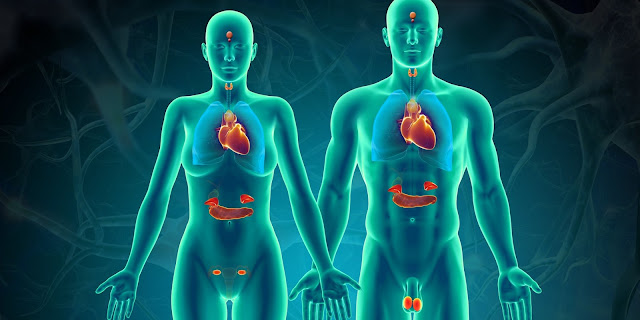Endocrine Therapy Drugs: The Future of Cancer Treatment
Endocrine therapy drugs (ETDs) have emerged as a breakthrough in the treatment of hormone-receptor positive cancers like breast, prostate and gynecological cancers. These targeted drugs work by blocking the effects of certain hormones like estrogen and progesterone that fuel the growth of cancer cells. With continuous advancements in research, ETDs are revolutionizing cancer management and improving outcomes for millions of patients worldwide.
Types of ETDs
A wide range of ETDs
are available today which can be broadly classified into following categories:
Aromatase Inhibitors
Aromatase inhibitors like anastrozole, letrozole and exemestane work by
blocking the enzyme aromatase which is responsible for the formation of
estrogen in tissues. By reducing estrogen levels in the body, these drugs
deprive hormone receptor positive breast cancer cells of the fuel required for
their growth and proliferation. They are primarily used in postmenopausal women
as a treatment for hormone receptor positive, HER2-negative breast cancer.
Selective Estrogen Receptor Modulators (SERMs)
Tamoxifen is the most commonly used SERM for the treatment and prevention of
breast cancer. It competes with estrogen for binding to estrogen receptors on
tumor cells. While it blocks the action of estrogen in breast tissue, it has
estrogenic effects elsewhere in the body like bones and cardiovascular system.
Other SERMs include raloxifene and ospemifene.
Selective Estrogen Receptor Degraders (SERDs)
Fulvestrant is an important SERD which works by degrading the estrogen
receptor, thereby depriving tumor cells of the estrogen signaling required for
their growth. It is used in metastatic breast cancer settings or recurrent
breast cancer where aromatase inhibitors or tamoxifen have failed or are not
suitable.
Gonadotropin-releasing Hormone (GnRH) Agonists
Drugs like goserelin and leuprorelin act by blocking the production of estrogen
and progesterone in premenopausal women through suppression of ovarian
function. They are used along with other anti-estrogen drugs in premenopausal
women with hormone receptor positive breast cancer.
Prostate Cancer Treatments
Following are some key ETDs used in prostate cancer management:
Androgen Deprivation Therapy: Drugs like bicalutamide, enzalutamide,
abiraterone and estrogens form the mainstay of androgen deprivation therapy
which aims to block the effects of male sex hormone testosterone on prostate
cancer growth.
Steroidal antiandrogens like cyproterone and hydroxystilbamidine can directly
bind to androgen receptors to inhibit the action of androgens. Non-steroidal
antiandrogens like bicalutamide competitively block the binding of androgens.
Emerging therapies: Apalutamide and darolutamide are next-generation,
second-line non-steroidal antiandrogens indicated after chemotherapy in
metastatic castration-resistant prostate cancer (mCRPC). They provide
additional survival benefits. Drugs like enzalutamide prolong survival in mCRPC
setting as well.
Role of ETDs in Improving Outcomes
The integration of ETDs in various treatment modalities like adjuvant,
neoadjuvant and metastatic settings has led to significant survival benefits in
hormone receptor positive cancers:
- Use of aromatase inhibitors after 5 years of tamoxifen further reduces the
risk of recurrence in postmenopausal breast cancer by 40-50% compared to
tamoxifen alone.
- Addition of ovarian suppression to tamoxifen increases disease-free survival
by 7% in premenopausal breast cancer patients.
- Studies demonstrate improved overall and progression-free survival with the
addition of newer generation anti-androgens like abiraterone, enzalutamide in
mCRPC.
- 5 years of tamoxifen reduces the annual breast cancer death rate by around
31% compared to placebo in early breast cancer.
Tailoring Therapy
With advanced understanding of hormone receptor positivity, HER2 status and
molecular subtypes of breast cancer, ETDs are increasingly being tailored and
sequenced based on individual tumor characteristics:
- Patients with low risk, node-negative, luminal A type may receive adjuvant
aromatase inhibitors alone for 5 years with excellent outcomes.
- Those with high risk luminal B cancers may get aromatase inhibitors sequenced
with tamoxifen to achieve maximum benefit.
- Addition of CDK4/6 inhibitors like palbociclib to aromatase inhibitors
improves progression-free survival in metastatic, HR+/HER2- breast cancer.
- Genetic testing helps identify patients who may benefit from novel drugs like
alpelisib or olaparib based on their PIK3CA or BRCA mutation status.
Future Directions
ETDs will continue to evolve with fresh insights into tumor biology. Some key
ongoing areas of research include:
- Dual targeting of estrogen receptors along with other drivers like PI3K/mTOR,
CDK4/6, PARP etc.
- Developing biomarkers to predict response and resistance to various ETDs.
- Combination approaches with immunotherapies in breast and prostate cancers.
- Novel oral selective estrogen receptor degraders and new generations of
anti-androgens.
- Repurposing old drugs for new genomic subgroups.
Conclusion
Precision targeting of hormone receptors with optimized treatment sequencing
holds the promise to convert cancer into a chronic disease for an increasing number
of patients. Continuous research should help ETDs overcome resistance and
achieve long term remissions with minimal adverse effects. With their ability
to improve both quality and quantity of life, ETDs will remain the mainstay of
targeted cancer care going forward.
Get more insights on Endocrine
Therapy Drugs



Comments
Post a Comment